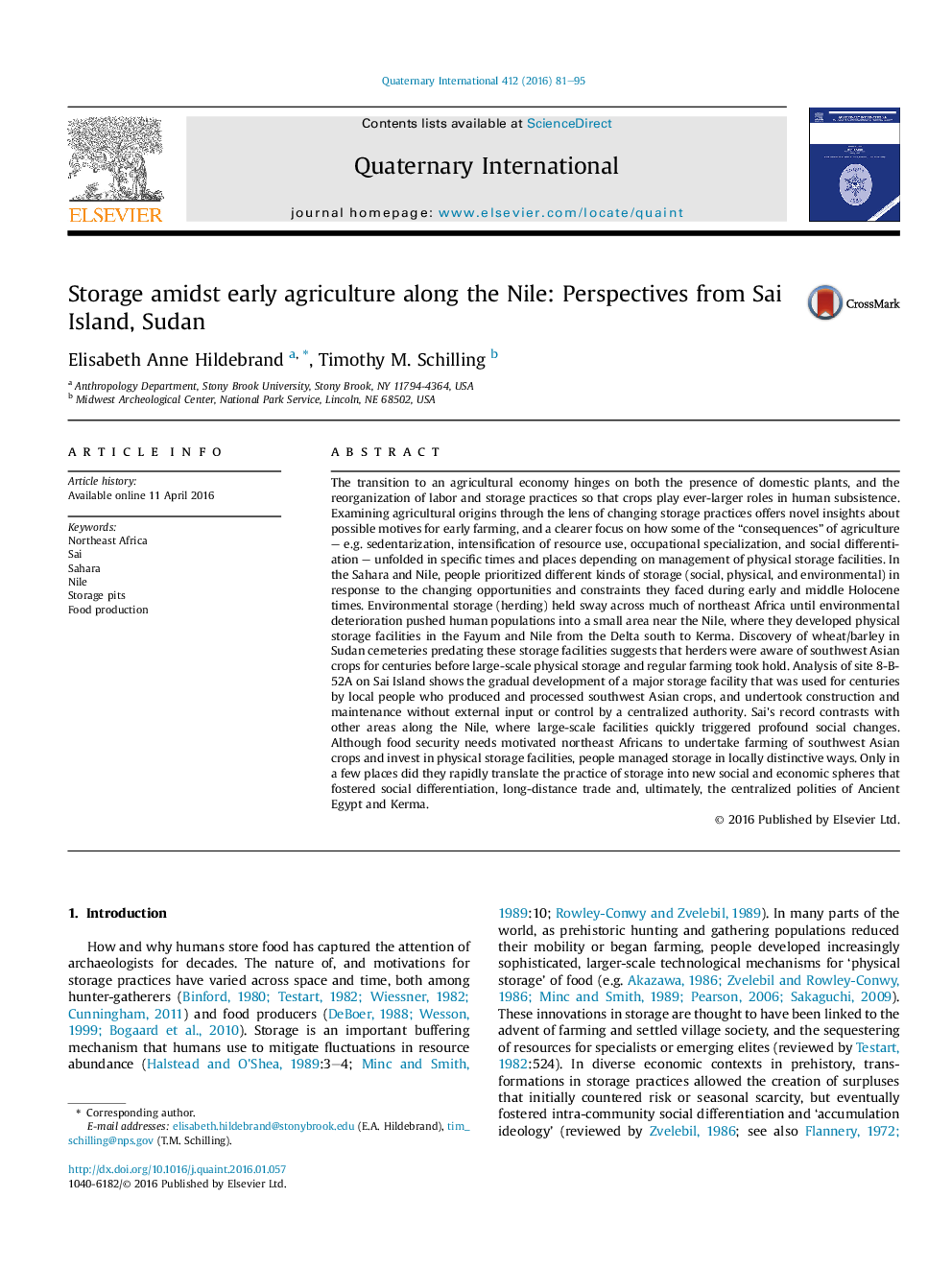| کد مقاله | کد نشریه | سال انتشار | مقاله انگلیسی | نسخه تمام متن |
|---|---|---|---|---|
| 5114208 | 1377972 | 2016 | 15 صفحه PDF | دانلود رایگان |
The transition to an agricultural economy hinges on both the presence of domestic plants, and the reorganization of labor and storage practices so that crops play ever-larger roles in human subsistence. Examining agricultural origins through the lens of changing storage practices offers novel insights about possible motives for early farming, and a clearer focus on how some of the “consequences” of agriculture – e.g. sedentarization, intensification of resource use, occupational specialization, and social differentiation – unfolded in specific times and places depending on management of physical storage facilities. In the Sahara and Nile, people prioritized different kinds of storage (social, physical, and environmental) in response to the changing opportunities and constraints they faced during early and middle Holocene times. Environmental storage (herding) held sway across much of northeast Africa until environmental deterioration pushed human populations into a small area near the Nile, where they developed physical storage facilities in the Fayum and Nile from the Delta south to Kerma. Discovery of wheat/barley in Sudan cemeteries predating these storage facilities suggests that herders were aware of southwest Asian crops for centuries before large-scale physical storage and regular farming took hold. Analysis of site 8-B-52A on Sai Island shows the gradual development of a major storage facility that was used for centuries by local people who produced and processed southwest Asian crops, and undertook construction and maintenance without external input or control by a centralized authority. Sai's record contrasts with other areas along the Nile, where large-scale facilities quickly triggered profound social changes. Although food security needs motivated northeast Africans to undertake farming of southwest Asian crops and invest in physical storage facilities, people managed storage in locally distinctive ways. Only in a few places did they rapidly translate the practice of storage into new social and economic spheres that fostered social differentiation, long-distance trade and, ultimately, the centralized polities of Ancient Egypt and Kerma.
Journal: Quaternary International - Volume 412, Part B, 15 August 2016, Pages 81–95
